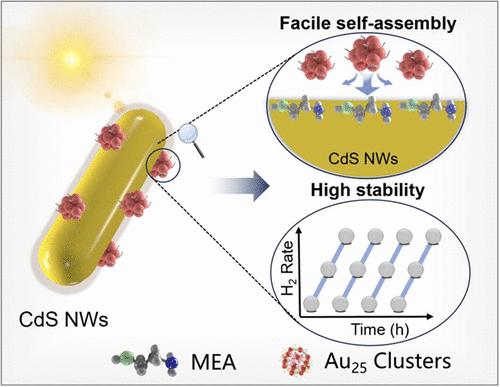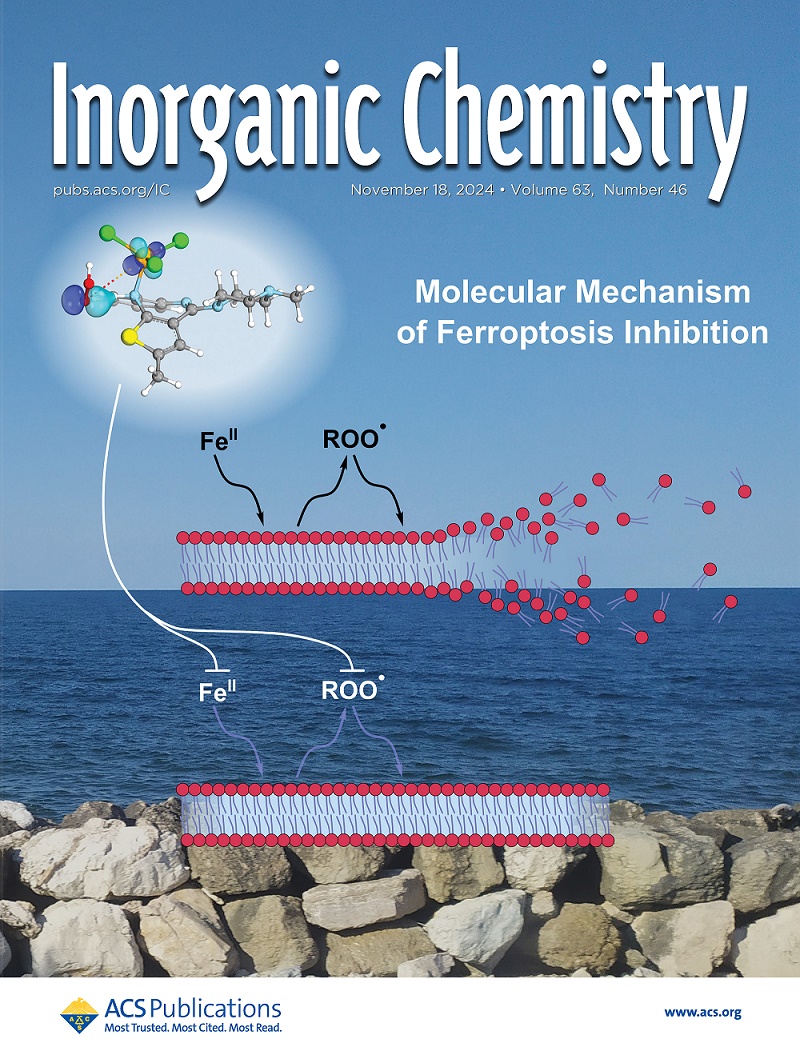Atomically Precise Metal Nanocluster-Mediated Solar Hydrogen Production
IF 4.3
2区 化学
Q1 CHEMISTRY, INORGANIC & NUCLEAR
引用次数: 0
Abstract
Atomically precise metal nanoclusters (NCs) stand out within metal nanomaterials due to the distinctive atomic stacking configuration, discrete energy band, quantum confinement effect, and enriched catalytic centers, positioning them as promising substitutes for conventional photosensitizers in solar energy absorption and utilization. However, the light-induced poor stability and ultrashort carrier lifetime of metal NCs as well as the difficulties in modulating charge migration collectively constrain their potential applications in photoredox catalysis. In this work, we conceptually construct the metal NC artificial photosystems by electrostatically self-assembling l-glutathione (GSH)-capped Au25(GSH)18 NCs onto transition metal chalcogenide (TMC) substrates (CdS, Zn0.5Cd0.5S, and ZnIn2S4) at ambient conditions. Benefiting from the advantageous photosensitization effect of Au25@(GSH)18 NCs, these self-assembled TMCs/Au25@(GSH)18 NC heterostructures exhibit significantly enhanced photocatalytic hydrogen production performance (λ > 420 nm). This universal photoactivity enhancement is predominantly attributed to the suitable energy level alignment between Au25@(GSH)18 NCs and TMCs, which considerably enhances the interfacial charge transfer and effectively extends the carrier lifetime. In addition, the photocatalytic mechanism is determined. This work would spark continued interest in crafting diverse atomically precise metal NC photocatalytic systems toward solar-to-hydrogen energy conversion.

求助全文
约1分钟内获得全文
求助全文
来源期刊

Inorganic Chemistry
化学-无机化学与核化学
CiteScore
7.60
自引率
13.00%
发文量
1960
审稿时长
1.9 months
期刊介绍:
Inorganic Chemistry publishes fundamental studies in all phases of inorganic chemistry. Coverage includes experimental and theoretical reports on quantitative studies of structure and thermodynamics, kinetics, mechanisms of inorganic reactions, bioinorganic chemistry, and relevant aspects of organometallic chemistry, solid-state phenomena, and chemical bonding theory. Emphasis is placed on the synthesis, structure, thermodynamics, reactivity, spectroscopy, and bonding properties of significant new and known compounds.
 求助内容:
求助内容: 应助结果提醒方式:
应助结果提醒方式:


